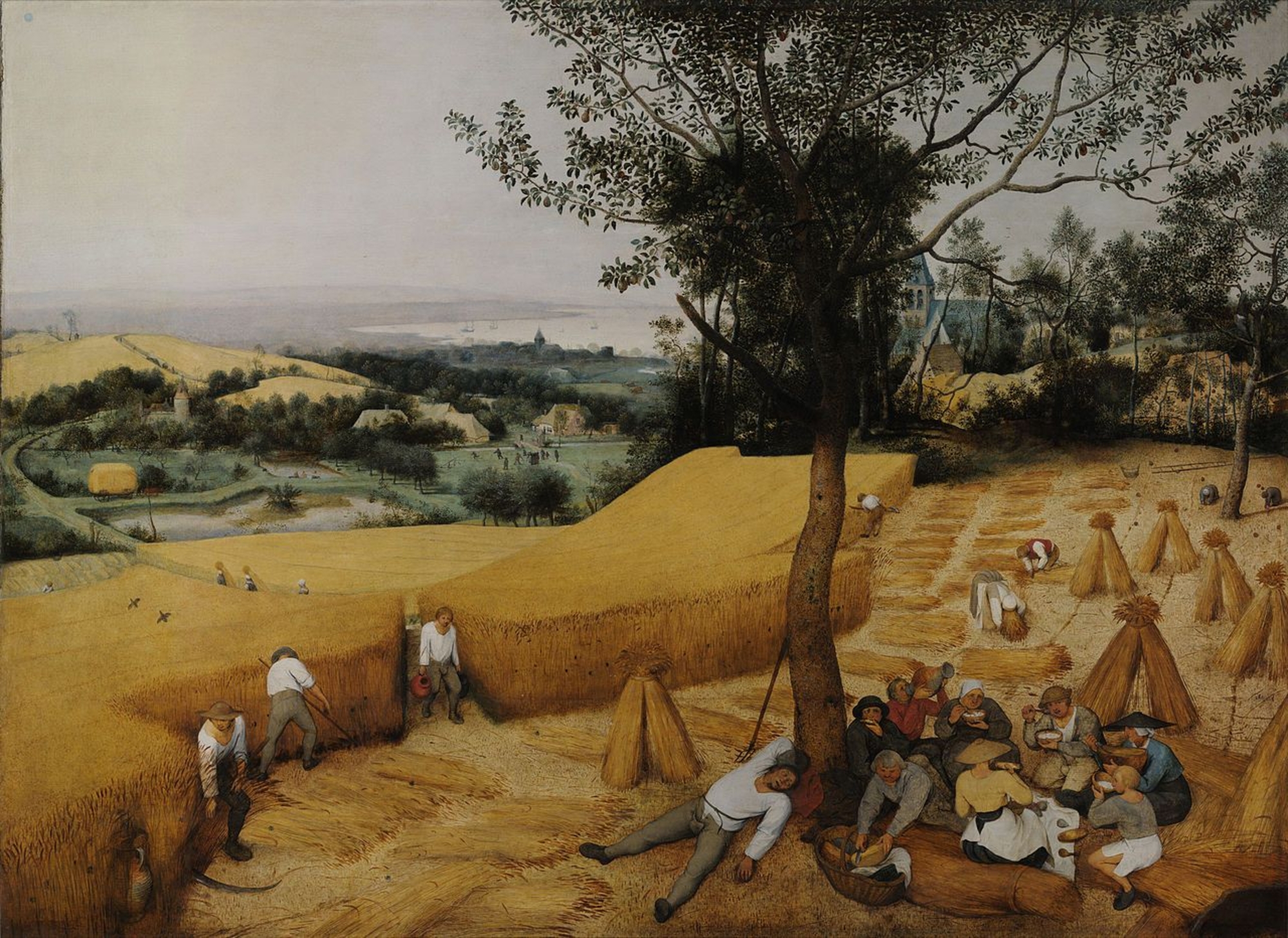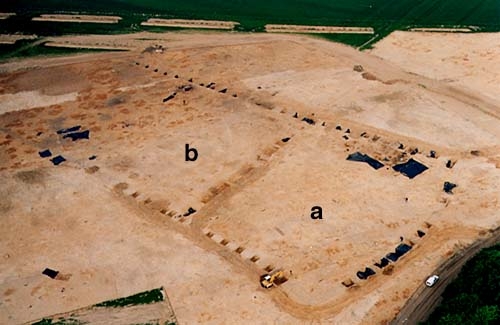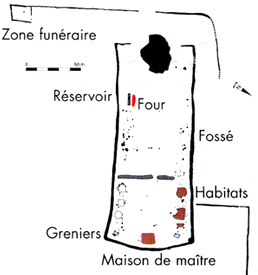- Home
- Discoveries
- Gallic settlements
- The aedeficia
- The case of Conchil-le-Temple
Uncovering a large farm whose layout is practically identical to that of a Gallo-Roman villa. Conchil-le-Temple (Pas-de-Calais).
The site of Conchil-le-Temple, which was remarkably excavated by F. Lemaire (1995), deserves our specific attention. This large ensemble consists exclusively of wood and earth structures, even though it is from the Roman era and was built shortly after the conquest. It is built according to an overall scheme that is practically identical to that of a Gallo-Roman villa.
Wooden buildings were arranged along the sides of two rectangular courtyards. These courtyards are 250 meters in length; one of them was residential (a), and the other for agriculture and crafts (b). They are separated by a ditch that is interrupted in the middle. Nevertheless, there is no stone foundation, despite the length of time the site was occupied (successive reoccupations over nearly eight centuries!).
The entire farm is surrounded by a long moated, rectangle, which abuts a much older establishment that has twin parallel ditches with an entrance en touche de palmer. Note the presence, in the large grouping, of a bassin de saumure and a remarkable large kiln used for salt production.
The same site. Lemaire's reconstructive sketch of the two rural establishments based on the excavations. The lower portion corresponds to the Augustan-era farm.


